QUATREFOIL CURVE
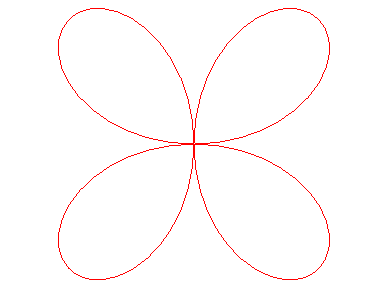
| next curve | previous curve | 2D curves | 3D curves | surfaces | fractals | polyhedra |
QUATREFOIL CURVE

| Other names: four-leaved rose, quadrifolium. |
| Polar equation: Cartesian equation: Rational sextic Cartesian parametrization in a frame turned by Length: Area: |
The quatrefoil is the rose with four petals.
It can be obtained as the trajectory of the second intersection
point of a line and a circle turning around one of their points, either
in the same direction and the circle going three times as fast as the line,
or in opposite directions at the same speed.
It can also be obtained as the trajectory of the second
intersection point of two identical circles turning around of of their
points, in the opposite direction and one of them going three times as
fast as the other:
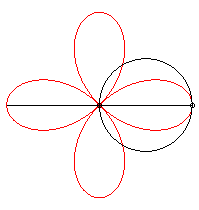 |
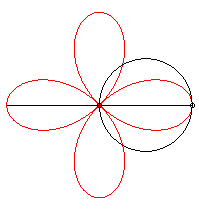 |
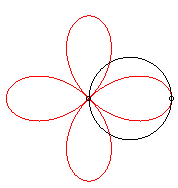 |
The quatrefoil is also:
| - the locus of the feet of the lines
perpendicular at O to a segment line of length 2a the ends
of which move on the axes; therefore, it is the pedal
with respect to O of the astroid: |
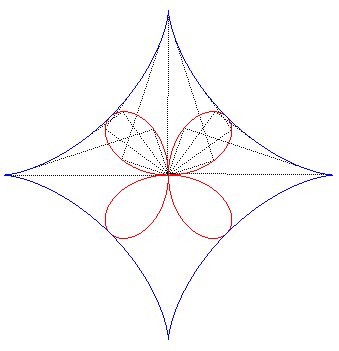 |
| - the orthoptic of the astroid. |
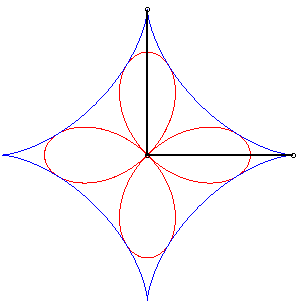 |
| - a
hypotrochoid:
sum of two circular motions with same radius, opposite directions, angular speeds with ratio 3; or base circle with radius |
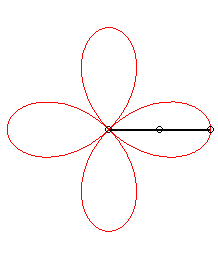 |
It can also be obtained as an orthopolar
of a circle.
| Like all roses, the quadrifolium is a view from above
of a clelia. This elegant
spherical curve with cylindric equation |
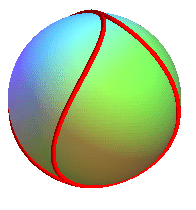  |
| The quadrifolium can also be obtained by projections based on a cylindric sine wave with 2 arches (or pancake curve), through a 3D basin. | 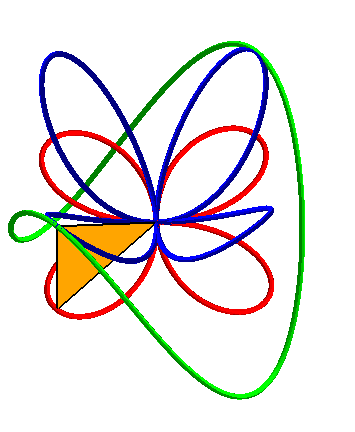 |
| Opposite, homothetic quadrifolia (in red), and their orthogonal trajectories. | 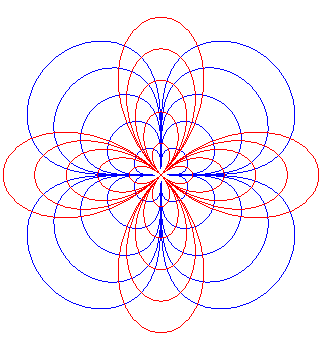 |
Here are a few variations providing slightly more realistic
quatrefoils:
 |
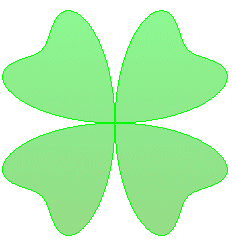 |
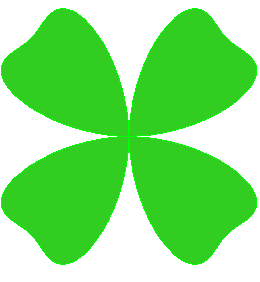 |
 |
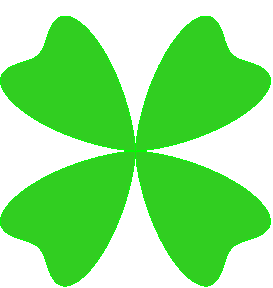 |
Reunion of two lemniscates of Bernoulli |
|
|
|
|
| Two quadrifolia with asymptotes: and |
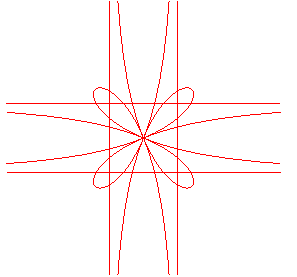 |
 |
See also Ceva
trisectrix, double egg,
conical rose,
and Enneper surface.
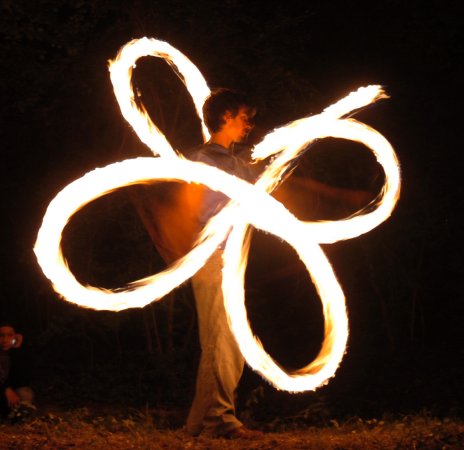
Superb quadrifolium traced by a poi player. |
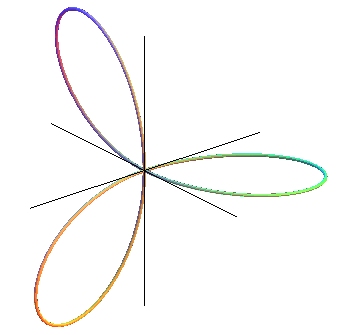 Three loops of a quadrifolium located on 3 orthogonal
planes constitute the edge of a three-blade helix, the projection of which
is a (false) regular trifolium...
|
| next curve | previous curve | 2D curves | 3D curves | surfaces | fractals | polyhedra |
© Robert FERRÉOL 2017